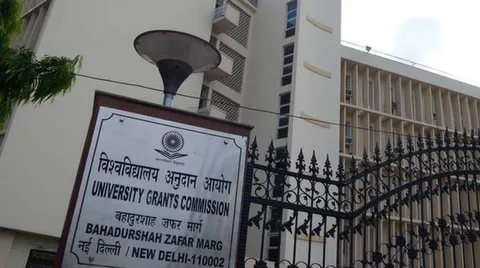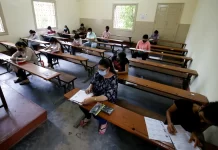Universities may enroll students twice a year under UGC: Universities are now able to enroll students twice a year thanks to the University Grants Commission (UGC). The UGC’s latest judgment implies that students can now be admitted in January/February and in July/August for the upcoming academic session, whereas previous restrictions only permitted admission during July-August.
The universities must now determine whether to offer admissions in both cycles or just one, depending on their faculty and infrastructure, following the UGC’s ruling.
Although biennial admissions are not required, the UGC has stated that this decision gives schools “flexibility” in case they choose to “increase their student intake and offer new programmes in emerging areas.”
According to UGC Chairman M Jagadesh Kumar, admissions are open at all universities in July and August. Furthermore, they are free to provide programs in January if that is their desire.
The circumstances may be specific to a given institution, and each institution may face different difficulties. The UGC offers the more comprehensive regulatory framework, allowing the institutions to figure out the specifics and put it into action if they believe they can,” he continued.
Regarding the possibility that colleges could now be able to admit students to distinct course sequences during the two admission cycles, he stated: “It is up to them…based on the infrastructure that is available.” at order to make better use of the resources available at universities, a scientific program may wish to use lab facilities in the evening for the session that started in January if they discover that the students accepted in the July session use them during the day.
This biannual admissions approach was initially tried by the UGC with online and open-distance learning (ODL) programs.
Regarding the rationale behind the UGC’s decision to permit biennial admissions, Kumar stated that the organization discovered during the online and ODL trials that about 500,000 students who would have previously had to wait a full year to enroll in these programs were able to do so as early as January.
“Even in the physical form, students who were not admitted in July/August due to a variety of circumstances could be able to enroll in January rather than having to wait a full year. It is a worldwide custom as well. Additionally, it might raise the GER (Gross Enrollment Ratio), according to Jagadesh Kumar.
Universities that now want to start a second session in January will need to alter their institutional norms and receive approval from their executive and academic councils before proceeding. This twice-yearly admissions process is applicable to undergraduate, graduate, and doctoral programs.
Regarding programs where admissions are determined by entrance tests, the Chairman of the UGC stated, “At the moment, all universities admit PhD candidates in July. Twice a year, UGC-NET is conducted. Thus, universities can now start accepting students for PhD programs twice a year. CUET (PG) is an optional exam for postgraduate programs; admission to many universities is determined by their own entrance exam or undergraduate degree grades. They are now able to provide master’s program admissions on a biannual basis.
According to him, CUET (UG) is not required for other universities offering undergraduate programs, with the exception of central universities. “They use a variety of admission criteria, such as marks from board exams, their own entrance exam, and CUET (UG) scores. The UGC chairman stated, “Universities are free to commence UG programs in a second session if they so want.
He went on, “Entrance exams are now technology driven,” when asked if they could now need to be held twice a year. It will be better for the pupils if they are held twice a year. We are trying to put that into practice one by one. I hope that eventually the majority of entrance tests will be administered by the NTA twice a year.
































